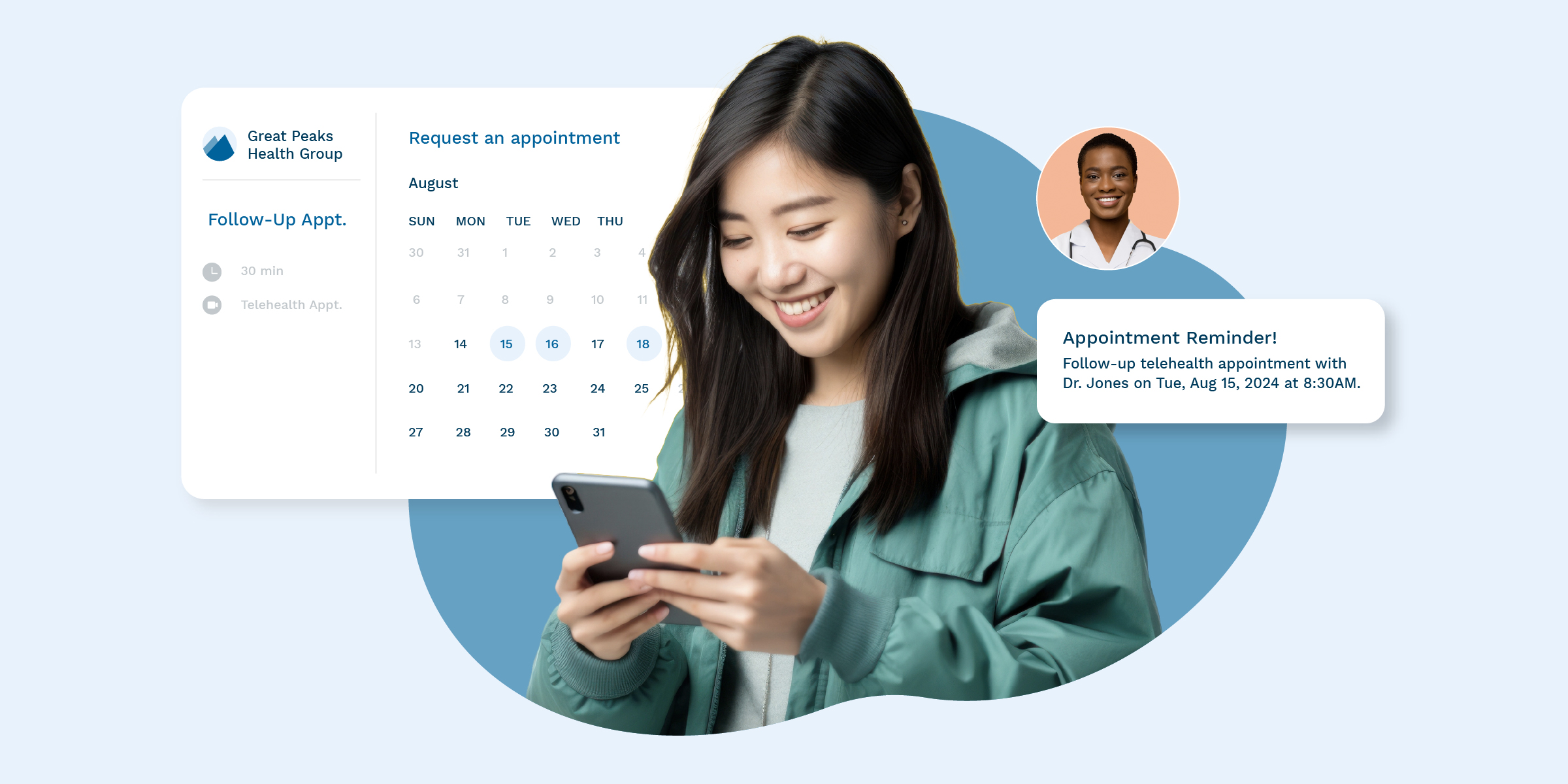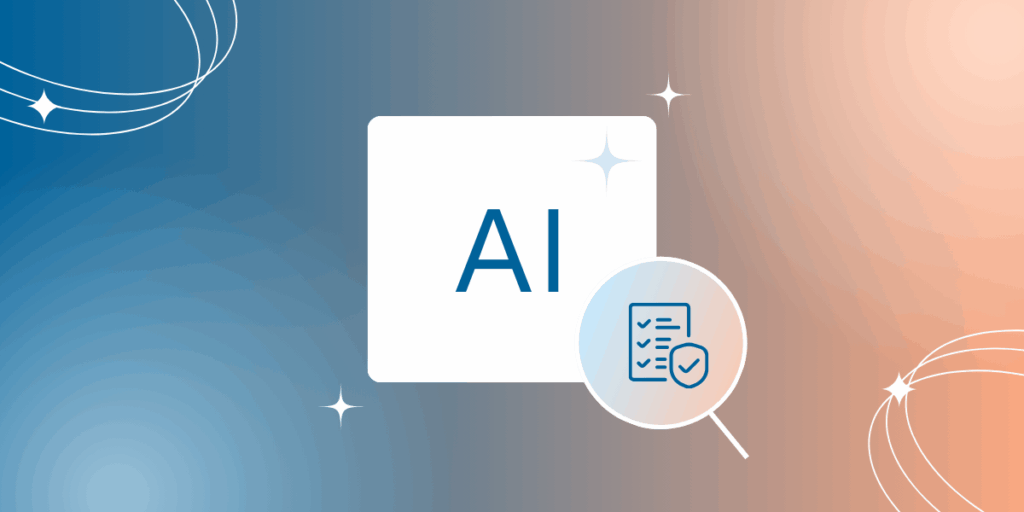Technology plays a massive difference in the patient experience today. Providers leveraging the data captured by the latest technology tools are better positioned to deliver a great patient experience that improves health outcomes and increases patient satisfaction.
Thanks to recent technological advances, individuals expect an entirely different healthcare experience than in previous years. A good patient experience is fast, efficient, and effective with providers coming prepared to appointments with accurate data and personalized healthcare plans. A poor patient experience is the complete opposite. Slow, inconvenient, and impersonal — which typically results in poor health outcomes, low patient satisfaction, and decreased trust.
Technology plays a massive difference in the patient experience today. Providers leveraging the data captured by the latest technology tools are better positioned to deliver a great patient experience that improves health outcomes and increases patient satisfaction.
Below, we’ll examine exactly how providers are using technology when creating patient journeys and how you can make a frictionless transition for patients as they navigate from the online space into the office. We’ll also discuss how to integrate technology both during and after care.
First, let’s take a closer look into patient expectations around technology and its effect on healthcare providers.
How Technology Has Changed Patient Expectations
One of the most notable changes technology has had on patient expectations is the demand for greater accessibility and convenience. With the creation of telemedicine, patients now expect to be able to communicate with healthcare providers from their own homes, reducing the need for in-person visits. One survey found that 75% of patients feel mobile technologies make care more convenient. The ease of scheduling appointments online, participating in virtual consultations, requesting prescription refills, or accessing health information remotely are just a few examples of added convenience.
Additionally, technology has changed patient expectations regarding provider communication and transparency. Patients expect to have real-time access to their medical records, test results, treatment plans, and messaging tools via secure online portals. Providing these tools and technologies enables providers to fulfill expectations and create a better patient experience. This is supported by data that found that more than half of U.S. consumers (53%) agree that adding more technology to their healthcare would improve their overall experience as a patient.
Understanding How Patient Journeys Vary Across Healthcare Settings
The examples above show how technology has changed patient expectations and the subsequent patient journey. This trend is only going to continue as technology works its way into every aspect of healthcare. Some of the key areas where technology is having the biggest impact on the patient journey include enrollment, scheduling, and patient preparation. We’ll take a closer look at these areas below.
Patient Enrollment
In a traditional patient journey, enrollment usually involves filling out numerous patient forms in a healthcare provider’s office. Patients must provide their personal information, medical history, insurance information, and treatment consent forms — a process that can be time-consuming and error-prone.
Technology has streamlined the process, allowing patients to register and complete forms online via secure portals or mobile health apps. This reduces the time spent in waiting rooms and lowers the chance of errors in data entry. Additionally, pre-filled forms that utilize existing data can further expedite the process, improving the overall patient experience before a patient arrives in the office.
Scheduling
Before technology, a patient’s scheduling journey involved calling a provider’s office, waiting on hold (sometimes for several minutes), and coordinating available times with a receptionist. This process can be cumbersome for patients — particularly those with busy schedules or urgent medical needs. The traditional process also increases the risk of patients forgetting when and where their appointment is.
Technology has completely transformed the scheduling process. Patients can now book appointments entirely online via websites, mobile apps, or patient portals. They can easily view available time slots and choose one that best fits their schedule without needing to talk to a receptionist. Reminders and confirmations can also be sent via text message or email, lowering no-show rates and improving clinic efficiency.
Pre-Visit Preparation
When preparing for an in-office visit, patients used to rely on receiving instructions through the phone or mailed information packets. Patients would also have to remember to bring necessary documents, medical history, and any other pre-visit preparations like fasting or medication adjustments. Having patients try to remember all this information usually results in confusion or incomplete preparations.
With technology, preparing for visits is much easier. Healthcare platforms and digital tools help patients stay informed and ready for their appointments by providing pre-visit instructions, checklists, and other educational materials. Automated reminders can prompt patients to complete specific tasks, like filling out pre-appointment questionnaires or bringing certain documents. This streamlines the entire patient preparation process and gives patients more flexibility and convenience.
Ultimately, technology has changed patient journeys in numerous ways, making key processes more efficient, convenient, and patient-centered. These advancements improve the overall patient experience and result in better health outcomes and streamlined healthcare operations.
Creating a Frictionless Experience from Online to In-Office
The patient journey doesn’t just stop online; providers need to ensure an individual’s transition from their online environment to their office. Technology can help with this and create a seamless transition.
The process begins with a user-friendly online portal or mobile app where patients can easily access healthcare information or administrative tools like appointment scheduling, pre-registration, digital forms, and more. For patients, filling out the necessary paperwork and medical histories in advance reduces their wait time at the office. Providers can then integrate the data from the online portal directly into their electronic health record (EHR) system, ensuring all information is accurate, updated, and available to healthcare staff.
With access to accurate, up-to-date data, providers can avoid asking redundant questions and focus more time on treating patients and creating personalized treatment plans. This allows providers to create a more effective and streamlined patient journey and ensures a patient’s time in the office is as productive and pleasant as possible.
At the end of the visit, providers can use technology to continue treating patients. For example, using secure messaging systems, providers can follow up with patients, answer any outstanding questions, provide additional instructions, or remind patients of their next steps. They can also use automated reminders for medication adherence, upcoming appointments, or lifestyle modifications — all through email or text. With 9 in 10 (88%) of consumers finding text message notifications for these types of information valuable, providers can easily deliver on a key patient expectation.
Plus, patients can access their test results, review visit summaries, and communicate with their healthcare teams from virtually anywhere. This gives individuals a sense of control and involvement in their health management, which helps improve healthcare outcomes and results.
Ultimately, by bringing technology into the entire patient journey — from initial online interactions and in-office experiences to post-visit follow-ups — healthcare providers can create a frictionless, comprehensive, and patient-centered approach to care. These advancements not only enhance the patient experience but also improve health outcomes and the efficiency of a healthcare facility.
Transform the Patient Journey with Modern Healthcare Tools
Technology plays an indispensable role in transforming and improving the patient journey in healthcare. From streamlining administrative processes like enrollment and follow-up visits to scheduling and appointment reminders, technology ensures patients receive timely, personalized, and efficient care. Additionally, these tools empower patients by giving them easier access to their health information, facilitating seamless communication, and enhancing the overall quality of care.
With the healthcare industry continuing to evolve, healthcare facilities must integrate modern digital solutions to meet — and exceed — patient expectations. RXNT provides healthcare facilities with an entire suite of healthcare tools, all designed to further enhance the patient journey.
Learn more about RXNT by scheduling a demo today.





